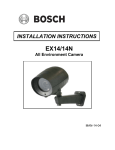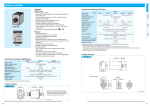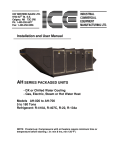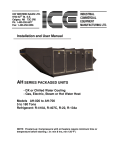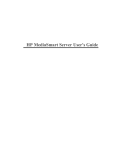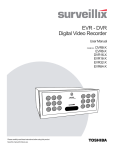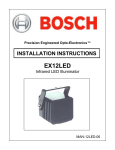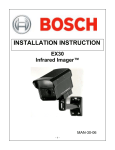Download Bosch EX49N Installation manual
Transcript
Precision Engineered Opto-Electronics™ INSTALLATION INSTRUCTIONS EX49N “No-Grip” High Impact Dome Night Vision Camera MAN-49N-00 IMPORTANT SAFETY INSTRUCTIONS 1. Read these instructions. 2. Keep this instruction. 3. Heed all warnings. 4. Follow all instructions. 5. Do not use this apparatus near water. 6. Clean only with dry cloth. 7. Do not block any ventilation openings. Install in accordance with manufacturer instructions. 8. Do not install near any heat sources such as radiators, heat registers, stoves or other apparatus (including amplifiers) that produce heat. 9. Do not defeat the safety purpose of the polarized or grounding-type plug. A polarized plug has two blades with one wider than the other. A grounding type plug has two blades and a third grounding prong. The wide blade or the third prong is provided for your safety. If the provided plug does not fit into your outlet, consult an electrician for replacement of the obsolete outlet. 10. Protect the power cord from being walked on or pinched particularly at plugs, convenience receptacles, and the power where they exit from the apparatus. 11. Only use attachments/accessories specified by the manufacturer. 12. Use only with the cart, stand, tripod, bracket, or table specified by the manufacturer, or sold with the apparatus. When a cart is used, use caution when moving the cart/apparatus combination to avoid injury from tip-over. 13. Unplug this apparatus during lightning storms or when unused for long periods of time. 14. Refer all servicing to qualified service personnel. Servicing is required when the apparatus has been damaged in a way, such as power-supply cord or plug is damaged, liquid has been spilled or objects have fallen into the apparatus, the apparatus has been exposed to rain or moisture, does not operate normally, or has been dropped. IMPORTANT For best results, please read this Instruction Booklet prior to installing the EX49N camera.For best results in infrared image quality, when reassembling the dome to the housing, make sure the foam donut is in tight 360° contact with the dome. WARNING ! CSA Certified / UL Listed CLASS 2 power adaptors must be used in order to comply with electrical safety standards. This Product Has Been Certified By CSA International To Include the Health Care Facility Requirements Of UL 2044. EU Directives covered by this declaration: 72/9/EC Low Voltage Directives 89/336/EEC Electromagnetic Compatibility Directive This installation should be made by a qualified service person and Bosch Security Systems, Inc. will not be responsible for injuries or damages resulting from the improper installation or use of any product sold by Bosch Security Systems, Inc their agents, distributors or dealers. . NOTE: This equipment has been tested and found to comply with the limits for a digital device, pursuant to part 15 of the FCC rules. These limits are designed to provide reasonable protection against harmful interference in a residential installation. As part of its’ normal operation this device can generate radio frequency energy and if not installed and used in accordance with the installation manual may cause interference to radio communications. However, there is no guarantee that interference will not occur on a particular installation. If the device does cause interference to radio or television reception the user is encouraged to try to correct the interference by one or more of the following measures: 1) Fit Ferrite beads on all cable to and from the power supply box, within the box walls. 2) Route the composite cable between the camera and the power supply in steel conduit piping over the entire run of the cable up to and including connection to a deep conduit base fitted under the camera and a conduit fitting adaptor in the wall of the PSU box. 3) Contact BOSCH Service Center for further advice. INDEX – EX49N Page Description...................................................1 Unpacking....................................................2 Parts List......................................................2 Items Required for Installation.....................2 Initial Preparations .......................................3 Guidelines....................................................3 Section 1. Dome Removal...........................4 Section 2. Input Power Connections .......... 6 Section 3. Mounting – Camera Base.........10 Section 4. Camera/LED Adjustments ........15 Section 5. Camera Re-Assembly ..............21 Section 6. Troubleshooting Guide .............23 Section 7. Mounting Holes Diagram ..........26 Section 8. General Specifications..............27 DESCRIPTION The EX49N “No-Grip” High Impact Dome Night Vision Camera has been engineered for surveillance in hostile environments. Compact and good looking, the camera features a smooth “no-grip” housing for protection against theft and vandalism. An aluminum housing, CNC-machined from a billet, with an impact resistant polycarbonate dome and locking retaining ring, make it extremely rugged and weather-tight. For flexibility, the CCD Camera/LED Array can be fully rotated using a unique “Pan-Tilt-Twist” (PTT) mounting bracket. A voltage regulator circuit allows for 12V dc or 24V ac operation, and a range in between, also providing protection from voltage surge, transient spikes, and reverse voltage. The EX49N is available in several models designed to meet specific needs. 1 UNPACKING Care should be taken when unpacking the shipped unit. Check the parts list and confirm all items have been located. Inspect the equipment thoroughly to ensure nothing was damaged in transit. Contact BOSCH Service Center if a problem is noted, see the rear page of this booklet for contact numbers. PARTS LIST (items supplied with unit) - EX49N Camera Assembly with foam gasket - Installation Instructions booklet - Plastic bag containing one Allen key ITEMS REQUIRED FOR INSTALLATION (not supplied with unit) - Philips screwdriver - Small slotted screwdriver - Mounting screws, etc. 2 INITIAL PREPARATIONS Determine the operating voltage at the installation site. The camera‘s Voltage Regulator Board accepts either +12V dc or 24V ac input. See Section 2, Input Power Connections. Determine the optimum location for the camera. Section 3, Mounting-Camera Base. All cameras have been tested prior to shipment. After the wiring has been reconnected, it is advisable to check the camera’s operation before installation. ESD protection – Cameras and circuit boards are sensitive electronic components. It is recommended to wear a ground strap to ground any static charge. (Alternative: touch a grounded metal plate for at least a minute before proceeding with any disassembly) GUIDELINES The installation of the EX49N camera is explained in Sections 1 to 5 listed below. It is important that these steps are followed in sequence: 1. 2. 3. 4. 5. Dome Removal Input Power Connections Mounting – Camera Base Camera /LED Adjustments Camera Re-Assembly 3 1. DOME REMOVAL The camera’s dome and its retaining ring must be removed prior to mounting the camera or performing any wiring disconnections and reconnections. The set-screws in the retaining ring are not tightened in the factory and protrude by 1/8" (3mm) in order for the ring to be rotated. Refer to Figure 1 - 1 on page 5. Step 1.1 - Place the camera on a flat surface. Step 1.2 - Press firmly on the dome with one hand and rotate the retaining ring in a counter-clockwise direction with the other hand. Push against the protruding set-screws with a finger to rotate the ring. Do not use a screwdriver or other metal device. Step 1.3 - Remove the dome and the retaining ring. Set them aside. 4 Rotation Set Screws (3) Retaining Ring Dome Camera Base FIGURE 1 – 1 Dome Removal 5 2. INPUT POWER CONNECTIONS Attention: External Video Cable Systems Must Be Properly Grounded In Accordance With The National Electrical Code, ANSI/NFPA 70. The EX49N Camera Unit is pre-connected with an electrically isolated power board (VRB) for 24V ac or 12V dc operation, with no change to the polarity of the wires. The VRB also connects to the Camera, to LED Array Power Board to the Line Lock Board (if available). See Figure 2 – 1 on page 7 and Figure 2 – 2 on page 8 NOTE: For DC input, the input voltage range is 10.5V dc to 40V dc. The recommended input current from the power supply should be approximately 1 Amp. For AC input, the input voltage range is 12V ac to 28V ac. The recommended input current from the power supply should be approximately 1 Amp. 6 Power IN Power OUT FIGURE 2 – 1 12V dc or 24V ac Electrically Isolated Power Board (VRB) 7 Power to LED Array Photocell Adjustment 12V Enable Power Input FIGURE 2 – 2 LED Array Power Board 8 This view shows the location of the optional Heater Board for the “N” and “ZN” Cameras. Camera/LED Assembly PTT Mounting Bracket VRB Module Camera Heater Board From Input Power Terminal Block on VRB Module FIGURE 2 – 3 Optional Camera Heater for Camera / LED Array Board Units 9 3. MOUNTING - CAMERA BASE Caution: The selected mounting location should not place the camera in a situation where its environmental specifications could be exceeded. See page 27. Ensure the selected location is protected from falling objects, accidental contact with moving objects, and unintentional interference from personnel. Follow all applicable building codes. • • • • The following installation guidelines must be followed: Locate the camera such that it cannot be easily interfered with, either intentionally or accidentally. Select a mounting surface capable of supporting the combined weight of the camera and mounting hardware under all expected conditions of vibration and temperature. Secure all cabling. Installations on drywall must use #8 screws and #8 drywall nylon plugs or a superior connection. 10 The mounting holes are configured for a single-gang electrical box or a round ceiling electrical box. The camera base can also be mounted to any flat surface. See the template on page 26. It would be advantageous if the power and video wires from the remote source could be routed into the electrical box at this time. Step 3.1 - Feed the camera’s power and video cables through the foam gasket hole. Step 3.2 - Connect these cables to the power and video cables that are routed from their remote location into the electrical box. Step 3.3 - Mount the camera housing to the electrical box. (Screws are not supplied). Refer to Figure 3-1-1, Figure 3-1-2, Figure 3-1-3 on page12, 13, 14. 11 Use four (4) screws for double-gang boxes or two (2) screws for ceiling boxes. FIGURE 3 – 1 – 1 EX47N Camera Adaptor Plate Mounting 12 FIGURE 3 – 1 – 2 EX47N Camera Base to Adaptor Plate Mounting 13 FIGURE 3 – 1 –3 EX48/49N Camera Base Mounting 14 4. CAMERA / LED ARRAY, ADJUSTMENTS For optimum picture quality the camera lens must be as close as possible to the dome’s inside face, without touching. However, the foam ring around the lens should be adjusted to seal against the dome, minimizing any side light interference, but without obstructing the field of view. The lens dome clearance and camera viewing angles can be achieved through a combination of adjustments available on the PTT bracket. For example: If the lens touches the dome, loosen the side adjustment knobs and slide the Camera/LED Array assembly away from the dome. See Figure 4-2 on page 18. The Camera and PTT bracket can also be rotated horizontally by loosening the base locking knob. See Figure 4-3 on page 19. The camera picture can be adjusted by twisting the PTT disc. See Figure 4-4 on page 20. 15 Note: Gasket Back Cover - Some products have a paper backing on the gasket. Please remove it before installation. Mounting - It is recommended that the camera be mounted to a flat non-porous surface for best results. The mounting holes and the area around the mounting screws should be sealed with silicone to prevent water or moisture from entering into the unit. Mounting Hole Mounting Bolt Seal area around mounting hole and bolt with silicon Conduits and Connectors - The conduits and connectors connecting to the housing should be sealed with silicone to prevent water and moisture from entering into the unit. Housing Seal conduit/connector connection with silicone Conduit/Connector 16 Note: If light reflects from side walls or other adjacent surface, some bright spots or halo may appear on the image. Move lens away from the reflection surfaces in order to avoid back reflection. FIGURE 4 – 1 Camera Lens Directional Alignment 17 PTT Bracket PTT Locking Knob VRB Adjustment Knobs (2) Optional Camera Heater Board Tilt Adjustment Camera/LED Array Module Vertical Adjustment Loosen the two adjustment knobs on the PTT bracket and tilt the lens to the desired viewing angle. The adjustment knobs are also used to position the lens for proximity to the dome. See Figure 4-3 on page 19 for lens rotational adjustment. FIGURE 4 – 2 Directional Adjustment, Tilt and Vertical 18 The LED Array is not shown for clarity reasons. Base Camera Rotation PTT Bracket Linear Adjustment Locking Knob Loosen the locking knob, rotate the PTT and Camera/Lens assembly to the desired position, and re-tighten the knob. The Camera Assembly can also be moved along the linear axis by this method. The complete directional adjustment must be done in conjunction with Figure 4-2 on page 18. FIGURE 4 – 3 Directional Adjustment, Rotation 19 Photocell LED Array Board Disc Rotation This adjustment is necessary in case the image on the monitor is not perpendicular. DO NOT touch the camera lens during this adjustment. Grip the VRB Board between thumb and finger. Rotate the Board until the image is correctly shown on a monitor. FIGURE 4 – 4 Camera Twist Adjustment 20 5. CAMERA RE-ASSEMBLY Make sure all wires are properly connected and tightened into the terminal blocks, all holes are sealed against moisture penetration, and all mounting screws are tight. Step 5.1 - Check that the large “O” ring gasket in the camera base has not been dislodged or distorted. Step 5.2 - Gently press the camera dome in place. Move the retaining ring over the dome. Step 5.3 - Use the protruding set-screws in the retaining ring to carefully rotate the ring clockwise until it is slightly snug, but not so tight that the ring cannot rotate further. Step 5.4 - Press firmly on the dome and rotate the retaining ring until one of the set-screws aligns with the adhesive dot on the side of the dome. Tighten all set-screws with the supplied Allen key. Refer to Figure 5-1 on page 22. 21 Camera Base Adhesive Dot Dome Retaining Ring Set Screws Tighten FIGURE 5 – 1 Camera Re-Assembly The Camera/LED Array and PTT Assemblies are not shown for clarity purposes. 22 6. TROUBLESHOOTING GUIDE PROBLEM No Video POSSIBLE CAUSE 1. Power Supply: -Connections…. -Voltage Range... LIKELY SOLUTION Check input power connections at the cable leads. Check for loose wires. If connected to DC, check input voltage range of 10.5 – 40V. If connected to AC, check input voltage range of 12 – 28V. Measure the voltage and current at the Input Power Cable. The current should be >.02A and <1.0A. 23 No Video (cont’d.) 2. Video Connections __________ Poor Picture ________________ Snowy Image Poor Video Signal 24 Determine if wiring polarity at “Video Connector” terminal block is correct. Check the cable and BNC connector. If still no video, connect the camera directly to the monitor. Check the video signal. If okay, the problem is with the interconnections. If still no video, contact BOSCH Service Center. See rear page of this manual for contact information. ____________ Ensure the video cable is correctly matched and terminated with 75 ohms at each end. Make sure the video cables are similar types. Poor Picture Snowy Image (cont’d.) Noisy Power Supply Check connections. Relocate or replace the power supply. Horizontal Scan Lines, Rolling Up or Down Ground Looping on video cable Check the coax cable shield is not touching ground, e.g. at couplings. Check video polarity. Negative, scrambled, or faded image Low voltage Halo Effect The Lens Foam Ring (Donut) is not touching the inside of the dome. Check voltage at the input power cable. Must be >10.5V dc or >12V ac. 25 Make sure the Foam Ring touches the domes’ inside surface. 7. MOUNTING HOLES DIAGRAM 26 8. GENERAL SPECIFICATIONS TV System ......................Monochrome – EIA ..............................................(CCIR optional) Video Signal Output............ 1 V p-p, 75 Ohm Operational Range................ -50°C to +40°C *with optional heater ............. -70°C to +40°C Humidity Range .............Up to 85% (relative) Power Supply (dc) ............. 12V dc or 24V ac ............................................................... 10W Dome ......................................Polycarbonate Base & Retaining Ring .........CNC Aluminum Anodized Dimensions .......................7” (177.8mm) dia. 3.56” (91mm) ht. Weight.....................................1.5 lbs. (680g) Subject To Change Without Notice. 27 NOTE: 28 NOTE: 29 Americas Bosch Security Systems, Inc. 850 Greenfield Road Lancaster, Pennsylvania 17601 USA Telephone+1 888-289-0096 Fax +1 585-223-9180 Email: [email protected] www.boschsecurity.us Europe, Middle East, Africa: Bosch Security Systems B.V. P.O. Box 80002 5600 JB Eindhoven, The Netherlands Phone: + 31 40 2577 284 Fax: +31 40 2577 330 [email protected] www.boschsecurity.com Asia-Pacific: Bosch Security Systems Pte Ltd 38C Jalan Pemimpin Singapore 577180 Phone: +65 6319 3450 Fax: +65 6319 3499 [email protected] www.boschsecurity.com © Bosch Security Systems, Inc. 2009; Data subject to change without notice.






































